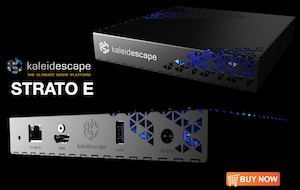dmorse6736
Registered
Thread Starter
- Joined
- Feb 28, 2020
- Posts
- 1
More
- Preamp, Processor or Receiver
- Yamaha Aventage 2000
- Main Amp
- Yamaha M1000
- Additional Amp
- Yamaha M1000
- Universal / Blu-ray / CD Player
- Oppo 205
- Front Speakers
- Klipsch IW 250
- Center Channel Speaker
- Klipsch IW 250
- Surround Speakers
- Klipsch IW 150
- Surround Back Speakers
- Klipsch IW 150
- Front Height Speakers
- Klipsch IW 150
- Rear Height Speakers
- Klipsch IW 150
- Subwoofers
- DIY
- Other Speakers
- Belle Klipsch
- Screen
- Dalite
- Video Display Device
- Sharp 17000
- Remote Control
- Too Many
I have been using REW to measure my home cinema and various room of friends and audio club members.
With audio equipment, amps are specified, for example, 20-20KHz +/-0.2 db. A speaker might be 35-20khz +/-3dB. But what metrics are appropriate for a audio system/room (ASR) performance? I have noticed most ASR roll off at about 10KHz. My GIK audio consultant has told me not to worry about that (home audio rooms do that, and I've seen the same in my measurements).
One room I measured that our audio club generally considers a good system (straight wire with gain, no processors, no EQ) had a response range of approximately 7-8 dB (using the REW psychoacoustic filter) measured at the prime listening position. If I used 1) a "flat' objective, 2) used 1kHz as the reference, 3) response range was limited to 10kHz, this system would be described as 40-10kHz -1, +6dB. If you used a different reference you might say the system was 40-10kHz +/- 4dB. When I worked at Cadillac as the Lead Entertainment Systems Engineer we found that typically when we sent a car to "The Mountain" they returned the car with a relatively smooth spectral response that had a say -3dB slope from 40- 10kHz. (I should add we felt the Bose systems had less listening fatigue than our other systems with a more jagged response and no slope or even a rise in high frequencies)
So with this said;
1A) Does REW have a math function that will calculate the +/- dB SPL given a specified frequency range of interest (ie 40-10kHz)?
1B) Given 1A does REW provide the reference frequency(s)?
2A) Is there a generally accepted metric or target for Audio System Room performance?
2B) What are others using REW measuring?
3) Is a slope in ASR common?
A final comment. If anyone can direct me to standards on this topic I would appreciate it. Also, I am referencing to SPL response only. I am not discounting the Spectragram, RT60, and Impulse as important to room performance.
Thanks, Dale
With audio equipment, amps are specified, for example, 20-20KHz +/-0.2 db. A speaker might be 35-20khz +/-3dB. But what metrics are appropriate for a audio system/room (ASR) performance? I have noticed most ASR roll off at about 10KHz. My GIK audio consultant has told me not to worry about that (home audio rooms do that, and I've seen the same in my measurements).
One room I measured that our audio club generally considers a good system (straight wire with gain, no processors, no EQ) had a response range of approximately 7-8 dB (using the REW psychoacoustic filter) measured at the prime listening position. If I used 1) a "flat' objective, 2) used 1kHz as the reference, 3) response range was limited to 10kHz, this system would be described as 40-10kHz -1, +6dB. If you used a different reference you might say the system was 40-10kHz +/- 4dB. When I worked at Cadillac as the Lead Entertainment Systems Engineer we found that typically when we sent a car to "The Mountain" they returned the car with a relatively smooth spectral response that had a say -3dB slope from 40- 10kHz. (I should add we felt the Bose systems had less listening fatigue than our other systems with a more jagged response and no slope or even a rise in high frequencies)
So with this said;
1A) Does REW have a math function that will calculate the +/- dB SPL given a specified frequency range of interest (ie 40-10kHz)?
1B) Given 1A does REW provide the reference frequency(s)?
2A) Is there a generally accepted metric or target for Audio System Room performance?
2B) What are others using REW measuring?
3) Is a slope in ASR common?
A final comment. If anyone can direct me to standards on this topic I would appreciate it. Also, I am referencing to SPL response only. I am not discounting the Spectragram, RT60, and Impulse as important to room performance.
Thanks, Dale










